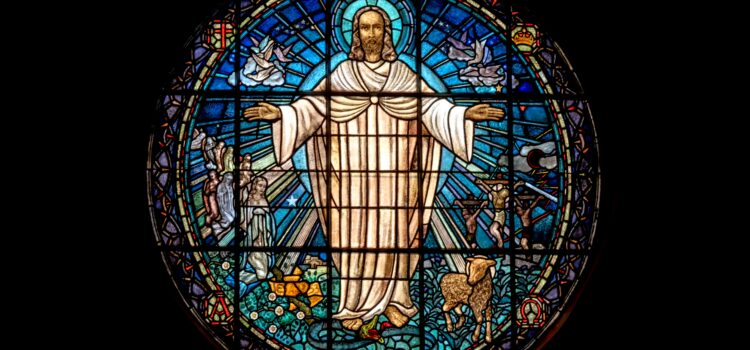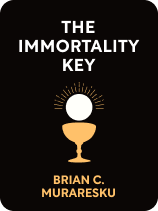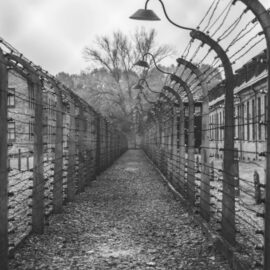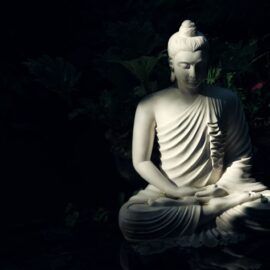

This article is an excerpt from the Shortform book guide to "The Immortality Key" by Brian C. Muraresku. Shortform has the world's best summaries and analyses of books you should be reading.
Like this article? Sign up for a free trial here.
What was the religion practiced before Christianity as we know it today? How does Christianity relate to paganism?
According to Brian Muraresku, the author of The Immortality Key, Christianity was born from ancient Greek mystical traditions. More specifically, it was an outgrowth of paganism that was practiced in ancient Greece at the time of the rise of early Christianity.
Keep reading to learn about the link between pre-Christianity and Greek paganism.
Pre-Christian Greek Religion
Muraresku says we can’t possibly understand the origins of Christianity without understanding the religions that already existed in that region at the time it emerged, so this is where we’ll begin. He centers his pre-Christianity investigation on ancient Greece, for two overlapping reasons:
1) The Greco-Roman world is where Christianity became a major religious and political entity.
2) Ancient Greece is credited as being the cultural foundation of Western civilization. So, if Muraresku’s theory is correct, that would mean pagan psychedelic rituals contributed not just to Christianity, but to the development of Western culture as we know it today.
At the time of the birth of Christianity, the Greeks practiced a polytheistic religion, with mythology including 12 major gods and goddesses, and many other minor ones. This religion included a rich mystical tradition. This means that practitioners sought to attain a profound spiritual connection with the supernatural. The real religious experience, Muraresku says, was happening in ritual ceremonies, as a direct individual connection to the divine and mystical.
| What Is Mysticism? The word mysticism comes from the Greek word mystes, which refers to someone who is initiated into a secret cult by achieving union with the divine. In other words, a mystical practice is one that involves the individual’s direct experience of divinity or “God.” There are many mystical paths and traditions that use a variety of methods to achieve such transcendental states. Some examples include meditation, prayer, yoga, asceticism, or consciousness-altering substances. Despite a concerted effort by early Christian leaders to expel mystical practices, a mystical tradition in Christianity has remained to this day. Christian mystics are often ostracized by mainstream Christianity, however, because they tend to emphasize direct communion with God over adherence to scriptural dogma. |
Here is a basic timeline of the important historical events relevant to this investigation, all of which we’ll discuss in more detail throughout the guide:
- Circa 1500 BC: Eleusinian Mysteries are established in Eleusis, Greece.
- Circa 1300 BC: Earliest written record of Dionysus worship occurs in Mycenae, Greece.
- 405 BC: The Bacchae (an ancient Greek tragedy about Dionysus) is written.
- 146 BC: Greece becomes part of the Roman Empire.
- AD 1: Christ is born in Palestine.
- AD 49-58: The apostle Paul brings Christianity to Greece, writing the first books of the Bible.
- AD 120-150: The Gnostic Gospels are written by followers of Christ.
- AD 392: Roman emperor Theodosius outlaws the Mysteries and other pagan practices, establishing Christianity as the official religion of the Roman Empire.
This timeline shows that there are around 300 years in which both the pagan traditions and Christianity were being practiced in Greece. In the following sections, we’ll describe some of the major features of the ancient Greek mystical tradition, beginning with the most sacred one, the Eleusinian Mysteries.
The Eleusinian Mysteries
Muraresku’s investigation of the pagan continuity hypothesis begins with the Eleusinian Mysteries, a secret cult practice that existed for almost 2,000 continuous years. The Eleusinian Mysteries were the heart of the religious tradition in Greece, he explains, as well as in Greek settlements in Italy and Spain, when Christianity arrived in the region in the first century AD.
Muraresku argues that the Mysteries are a crucial link between polytheistic pagan traditions and Christianity, and he says that the mystical experience happening here was likely facilitated by psychoactive substances.
The Eleusinian Mysteries involved secret rituals celebrated annually around the Fall equinox (harvest time) from about 1500 BC until AD 392, when the Mysteries were outlawed by the strictly Christian emperor Theodosius. So, the Mysteries continued to be practiced for around 300 years after the arrival of Christianity.
Despite the enormous timespan and the profound importance of the Mysteries, there is no detailed written description of exactly what happened during these rituals. The reason? Participants were forbidden to reveal the secret, on punishment of death. This is why the tradition was called the “Mysteries.” There are, however, some vague accounts of participants’ experiences in the initiatory rituals.
Some of the facts Muraresku gives us about the Eleusinian Mysteries from archaeological and written sources are as follows:
- The rituals were devoted to Demeter and Persephone: In mythology, Persephone spends half of the year in the underworld and half above ground with her mother Demeter. So, she undergoes a continuous cycle of death and rebirth, which causes the seasons. The rituals, then, are a means for humans to communicate with Persephone, so she can reveal the secrets of death and rebirth to them. (Shortform note: Some people actually believe that the central myth of Christianity—God, the Father, sent his son, Jesus, to Earth to die and be resurrected—is essentially a “masculinized” version of the Greek story of Demeter and Persephone.)
- There was a divine feminine element to the Mysteries: In the earlier days of the Eleusinian Mysteries, Muraresku tells us that only women could be initiated. Later, men would be allowed, but women remained in charge of determining who was worthy of initiation. We’ll discuss the importance of this divine feminine element in the next section. (Shortform note: As noted above, religious studies scholar Mara Lynn Keller agrees that women were central and sacred to the Mysteries and were the leaders of the rituals, but she argues that the Mysteries were always open to anyone who undertook the serious half-year preparation required for initiation.)
- The rituals centered around a sacred drink: Muraresku points out that written sources indicate that a drink called kykeon was central to the rituals, as a sacrament prepared by honored priestesses. He says kukeon is known to be barley-based, so it’s assumed to be beer. Muraresku believes it was not regular beer, but beer containing psychoactive compounds. Later in the guide, we’ll discuss his evidence to support this. (Shortform note: Also spelled kykeon, this beverage is described in Homer’s Iliad as containing water, barley, herbs, and goat cheese, and in The Odyssey, the sorceress Circe uses it to make a magic potion that turns men into pigs.)
- Participants were transformed by the experience: In the vague written accounts of participants’ experience in the Mysteries, Muraresku says there is a common theme of radical transformation. He says there are descriptions that recount the feeling that the participant was transformed into a god/goddess themselves and understood that they were immortal. This experience is referred to as “apotheosis” or deification—meaning “one who becomes a god,” and this concept has been used in the Christian church in reference to the Eucharist and consuming the flesh and blood of Christ. Muraresku believes this indicates a connection between the Mysteries, the psychedelic experience, and the Eucharist.
The Divine Feminine Divergence
Muraresku emphasizes throughout the book that a crucially important element of the Eleusinian Mysteries, and of the ancient Greek religion in general, was the divine feminine element. The Greek pantheon included both male and female deities, and the Temple of Demeter being home to one of the most sacred traditions shows us how highly revered the goddesses were.
Also, Muraresku says, sources indicate that women had always been the brewers of the sacred beverage of the Mysteries, and the leaders of the ceremonies. Art and literature from this general time period, in this region of the world, frequently depict women at the center and as leaders of religious rituals and ceremonies. This is important, he says, because it shows how the pagan and Christian religious traditions diverged over time—in particular how the exclusion of women from religious leadership was one of the major turning points that solidified Christianity as a very different tradition from pre-Christian paganism, and in fact from the earliest form of Christianity.
| Exclusion of Women From Christianity Although there is ample historical evidence that women were spiritual leaders in the early proto-Christian era, powerful men gradually began undermining women’s roles in order to establish a more patriarchal structure within the church. In one case, the name of a woman in a Biblical story was changed to a man’s name to eliminate the evidence that a woman was an apostle. There was also a concerted effort to conflate the character of Mary Magdalene (also an apostle of Christ) with a prostitute who appears in a different Biblical passage, and to this day, many Christians are under the mistaken belief that Mary Magdalene was a prostitute, although that is not stated anywhere in the Bible. |

———End of Preview———
Like what you just read? Read the rest of the world's best book summary and analysis of Brian C. Muraresku's "The Immortality Key" at Shortform.
Here's what you'll find in our full The Immortality Key summary:
- The secret that kept ancient Greeks and early Christians from fearing death
- The origins of Christianity and its overlap with pre-existing pagan customs
- The real reason why women can't be priests






